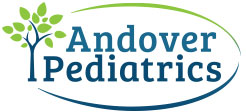Poison Ivy
What does the poison ivy rash look like?
The rash is characterized by weeping blisters which occur in linear streaks or patches. It may be accompanied by mild redness and swelling. Extreme itchiness is common. The rash may occur 1-2 days after exposure to the plant and typically lasts 2 weeks.
How do I protect my child against poison ivy?
- Avoid areas where poison ivy is likely to grow, such as river banks and fields.
- If you must go into areas where poison ivy may be located, wear socks and long pants.
- Wash well with soap and water if contact is suspected. You could also try using an over the counter medication called Tecnu which helps remove the oil from the skin that causes the rash. This comes in the form of a liquid soap or disposable wipes.
- Launder clothing and clean shoes as the poison ivy oil or sap on these items can continue to spread this irritating rash for weeks.
- Wash your pets if they are have been exposed to poison ivy, as the oil can stay on their fur and can spread the rash to susceptible individuals.
What is the treatment for poison ivy?
- Topical treatments include: calamine lotion, 1% hydrocortisone ointment, topical diphenhydramine, and oatmeal baths. These can all help with itching and hydrocortisone may help shorten the duration of the rash.
- Oral treatments include: cetirizine (Zyrtec) or diphenydramine (Benadryl). Both are available over the counter and can reduce itch and irritation.
- *Note – please do not use topical diphenhydramine with oral diphenhydramine, choose one or the other!
- Occasionally, if the rash is severe or involves the area around the eyes, face, or groin we will prescribe an oral cortisone medication to help clear the poison ivy.
When should I call my doctor?
- If the rash involves the face, groin, or more than 25% of the body.
- If the rash is accompanied by marked redness and swelling.
- If the rash has a discharge that is cloudy like pus.
- If your child has a history of serious reactions to poison ivy.

